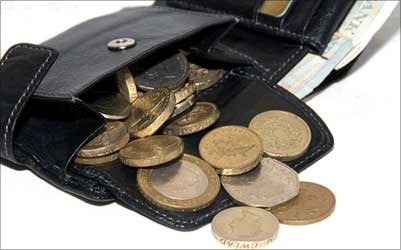 | « Back to article | Print this article |
 The Centre and states have crossed another hurdle in the way of Goods & Services Tax by agreeing on an annual turnover threshold of Rs 25 lakhs (Rs 2.5 million).
The Centre and states have crossed another hurdle in the way of Goods & Services Tax by agreeing on an annual turnover threshold of Rs 25 lakhs (Rs 2.5 million).
This means businesses with annual turnover less than Rs 25 lakh would be kept out of the GST purview.
To address the issue of dual control of traders -- by both the Union government and state governments -- in GST, it has been decided that taxpayers with annual turnover of over Rs 1.5 crore (Rs 15 million) would be taxed by the Centre, which will later disburse to states their share.
Similarly, those below Rs 1.5-crore turnover would deposit their taxes to states, which would subsequently pass on to the Centre its share.
Also, there would be a composition scheme (presumptive tax) for dealers with annual turnover of up to Rs 60 lakh (Rs 6 million).
A dealer could opt for a compounded levy of one per cent on taxable turnover, instead of paying GST at the standard rate; but he would lose the right to claim tax credit for these.
These decisions were taken last week in Patna by a technical committee on GST, comprising officials from both the Centre and states.
The group, which will have its third meeting next week, will give its report for consideration of the empowered committee of state finance ministers at its meeting in Mussoorie on May 10 and 11.
Currently, the threshold for central excise duty and service tax are annual turnover of Rs 1.5 crore (Rs 15 million) and Rs 10 lakh (Rs 1 million), respectively.
For value-added tax, it is Rs 10 lakh in most states.
With a threshold of Rs 25 lakh (Rs 2.5 million), the Centre will have an assessee base of about 200,000 for excise duty, compared with 130,000 at present. Its service tax assessee base, however, would come down from about 700,000 to roughly 250,000